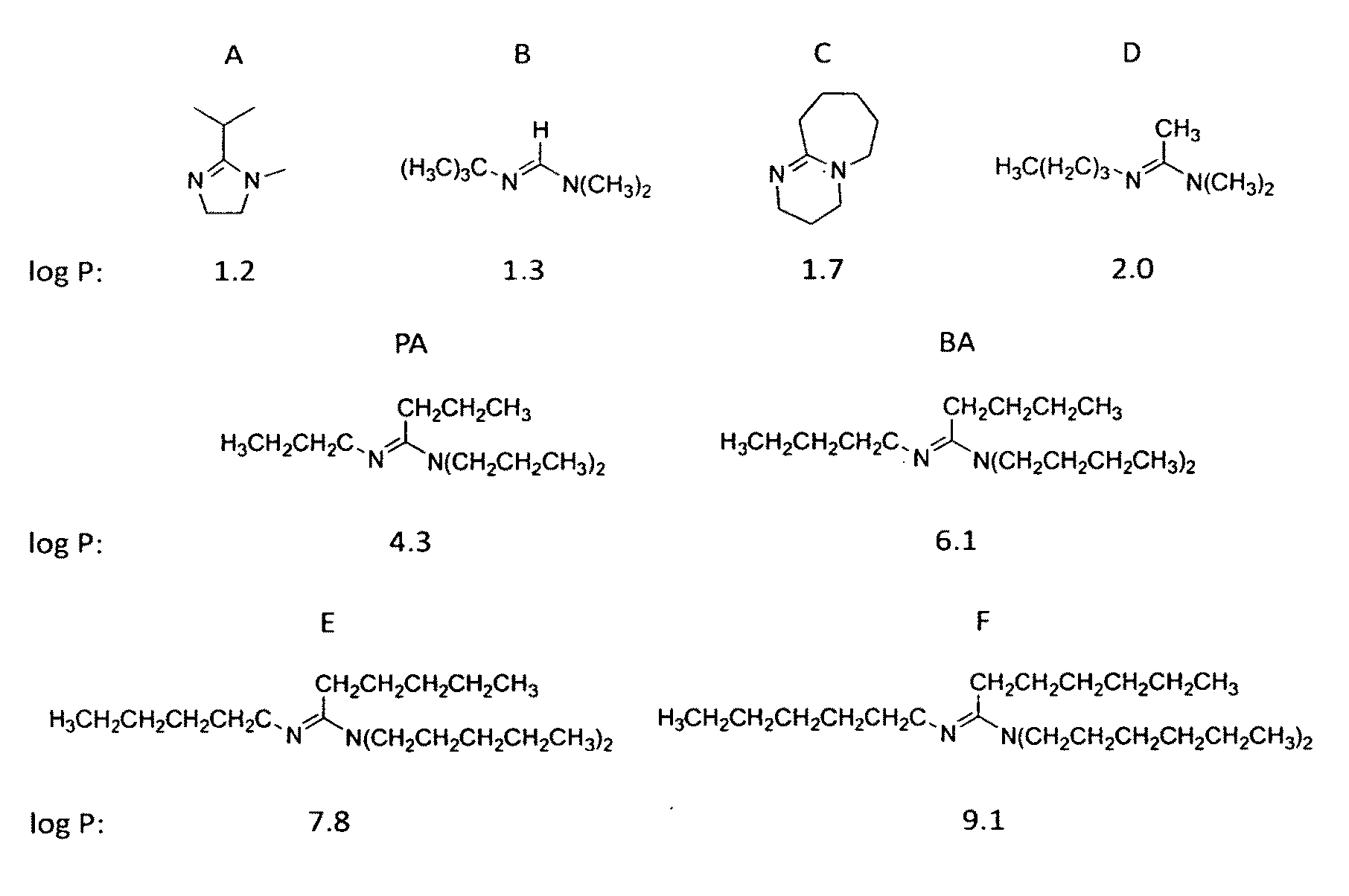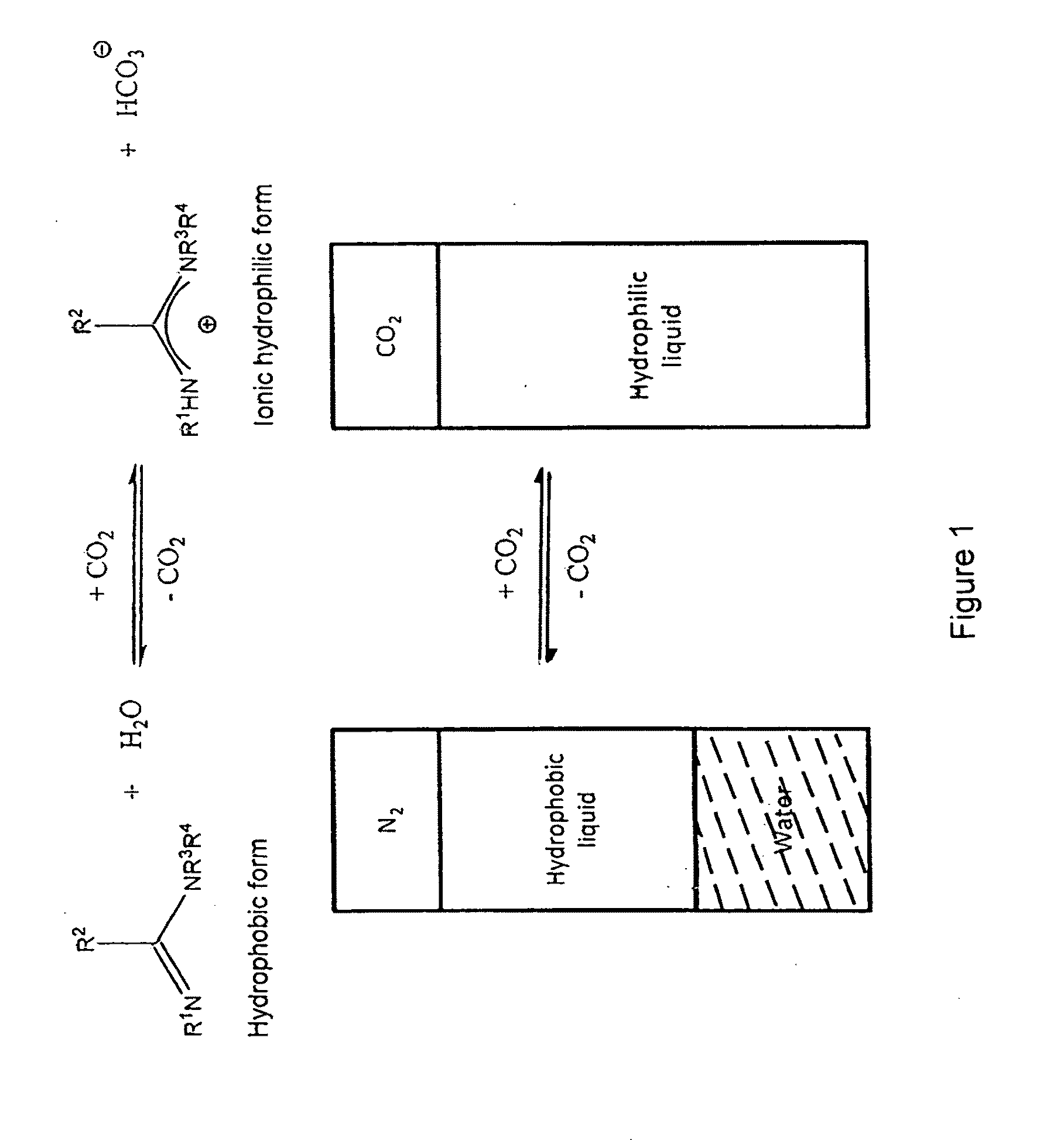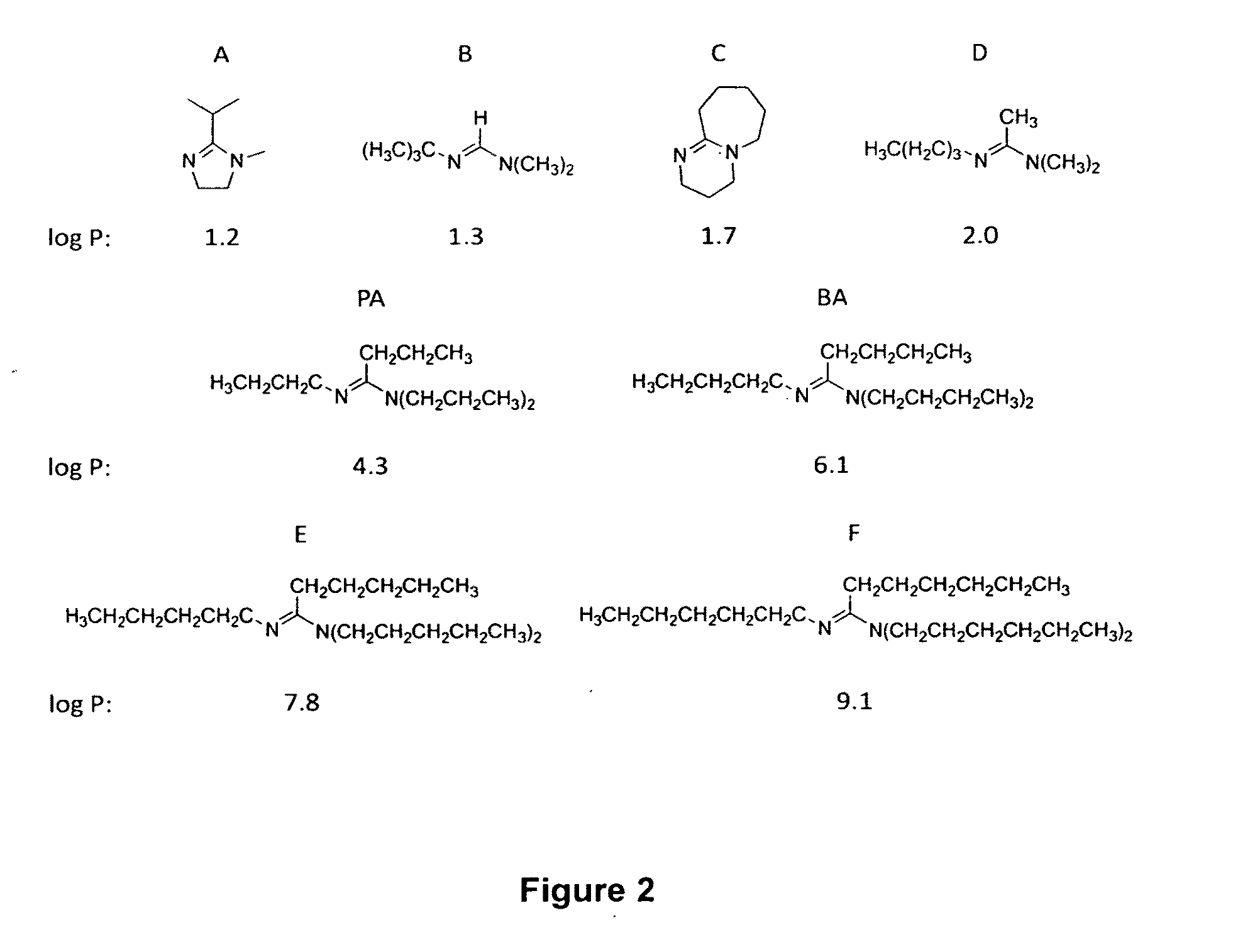Switchable Hydrophilicity Solvents and Methods of Use Thereof
a hydrophilicity and solvent technology, applied in the field of solvents, can solve the problems of increasing the economic cost and environmental impact of the overall process, limiting the use of catalysts for reaction and separation, and increasing the cost of overall process economic and environmental impact, and achieve the effect of less easily miscible with water
- Summary
- Abstract
- Description
- Claims
- Application Information
AI Technical Summary
Benefits of technology
Problems solved by technology
Method used
Image
Examples
embodiments
[0160]The invention provides systems that include switchable hydrophilicity solvents. In an embodiment of the invention, the switchable hydrophilicity solvents is a compound of formula (1) below,
[0161]that is immiscible with water;
[0162]where R1, R2, R3, and R4 are independently H; a substituted or unsubstituted C1 to C10 alkyl group that is linear, branched, or cyclic; a substituted or unsubstituted CnSim group where n and m are independently a number from 0 to 10 and n+m is a number from 1 to 10; a substituted or unsubstituted C5 to C10 aryl group; a substituted or a substituted or unsubstituted heteroaryl group having 4 to 10 atoms in the aromatic ring;
wherein a substituent is independently alkyl, alkenyl, alkynyl, aryl, aryl halide, heteroaryl, non-aromatic rings, Si(alkyl)3, Si(alkoxy)3, halo, alkoxy, amino, ester, amide, amidine, thioether, alkylcarbonate, phosphine, thioester, or a combination thereof.
[0163]Representative example of compounds of formula (1) include the follow...
working examples
[0319]The following chemicals were used as received: dibutylamine (98+%, Sigma-Aldrich (“Aldrich”), Oakville, Canada), butylamine (>98%, Aldrich), Nile Red (Aldrich), valoryl chloride (>98%, Fluka, available from Aldrich), dipropylamine (99%, Acros Organics, available through Fischer Scientific), propylamine (98%, Aldrich), butyryl chloride (98%, Aldrich), dimethylsulfate (99.8%, Aldrich), anhydrous diethyl ether (99.9%, Fischer Scientific, Ottawa, Canada), hexane (99.9%, Fischer Scientific), ethyl acetate (99.9% Fischer Scientific) hydrochloric acid (˜12 M, Fischer Scientific), sodium acetate (Fischer Scientific), potassium hydroxide (Fischer Scientific), triethylamine (99%, Sigma-Aldrich), 1,4-dioxane (99+% Aldrich), magnesium sulfate (99.5%+, Alfa Aesar, Ward Hill, USA), HCl in dioxane (˜4 M, Fluka), triethylamine (>99%, Aldrich), N-ethylpiperidine (99%, Aldrich), N,N-dimethylcyclohexylamine (99% Aldrich, also available through Acros Organics which are distributed through Fisher ...
example 1
Reversible Solvent Switching in an Amidine and Water System
PUM
| Property | Measurement | Unit |
|---|---|---|
| temperature | aaaaa | aaaaa |
| pressure | aaaaa | aaaaa |
| temperature | aaaaa | aaaaa |
Abstract
Description
Claims
Application Information
 Login to view more
Login to view more - R&D Engineer
- R&D Manager
- IP Professional
- Industry Leading Data Capabilities
- Powerful AI technology
- Patent DNA Extraction
Browse by: Latest US Patents, China's latest patents, Technical Efficacy Thesaurus, Application Domain, Technology Topic.
© 2024 PatSnap. All rights reserved.Legal|Privacy policy|Modern Slavery Act Transparency Statement|Sitemap



